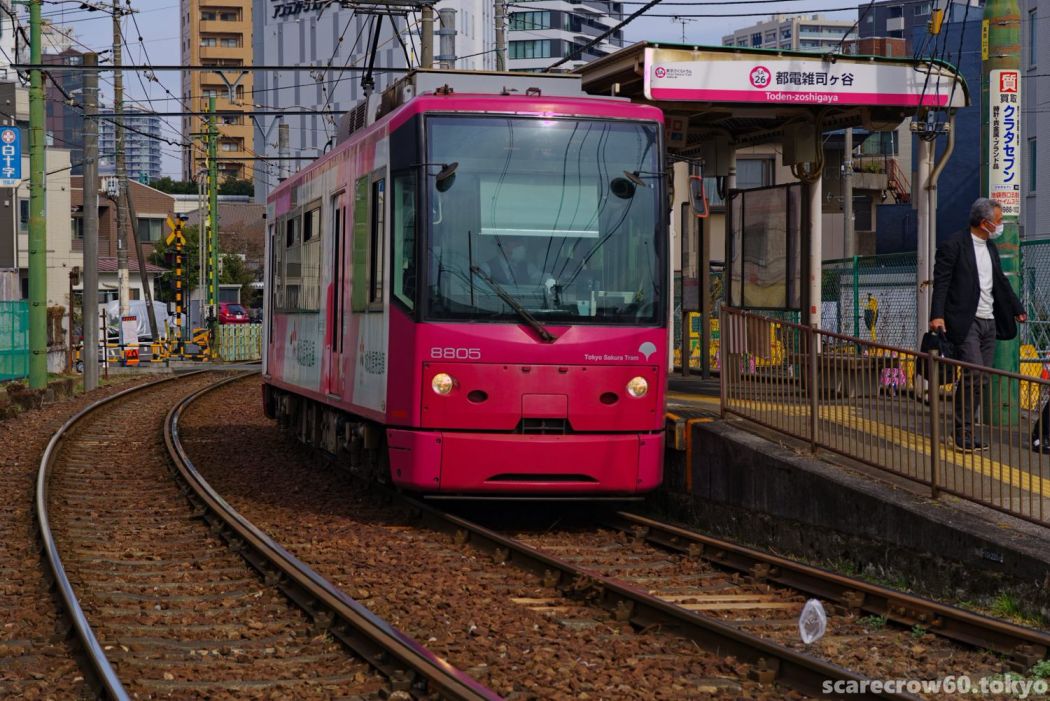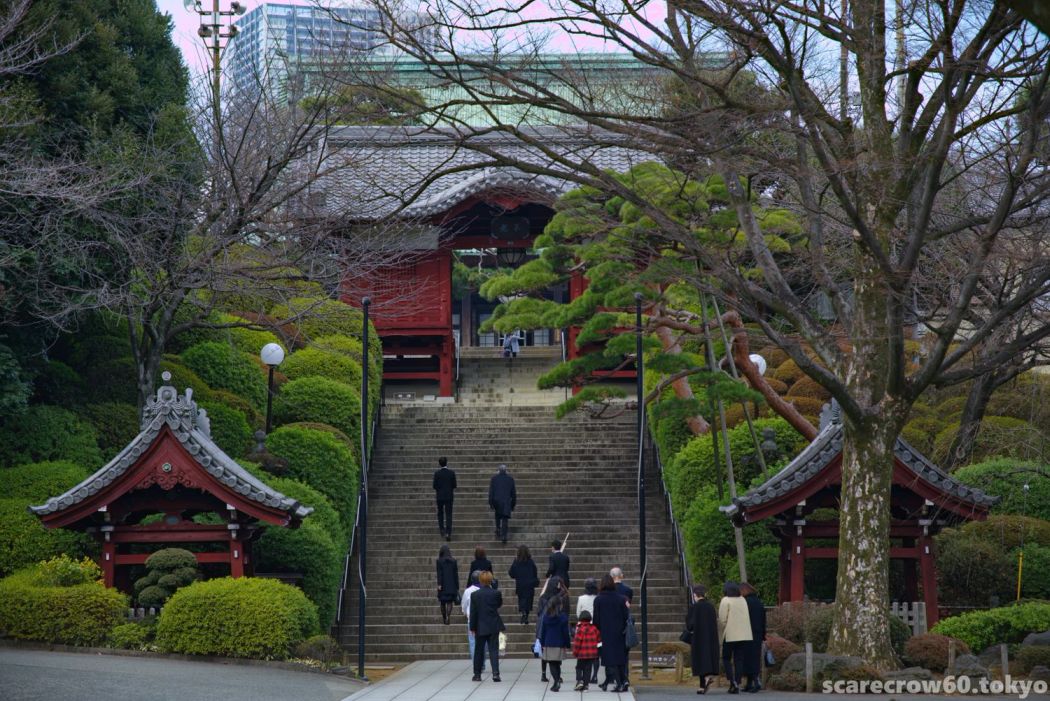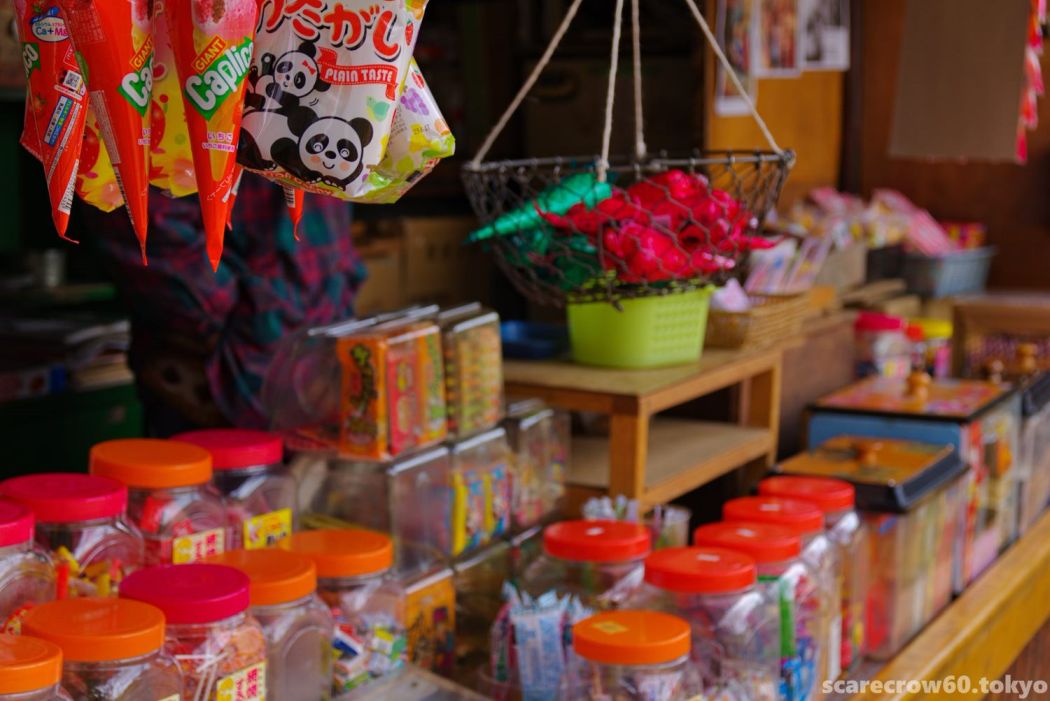This is my Zoshigaya walk, which got off to a bad start when the old missionary house museum was closed. The time was just right, so I decided to have lunch somewhere and have a break before regrouping.
I started walking toward Tsurumaki-dori Avenue, which looked like a good place to have a bite to eat, and I found myself walking down from a hill.
I realize now, after looking at this photo, that there are two different notations for Zosigaya. For example, it looks like this
Address notation: ZoshiGAya
Tram: Zoshigaya stop
Tokyo Metro: ZoshiGAya Station
Takehiro Higuchi’s novel: “Farewell Zoshigaya”
#note for English readers: above GA means “Hiragana” notation besides ga means “Katakana” notation
This article will refer to it as Zoshigaya, but it is important to note that the world is not unified in its notation.
I took the liberty of imagining that Tsurumaki-dori used to be a river street because of its location at the end of a slope and its gentle curve. As one descends from the high-rise residential area to the lowlands, the scene changes to a shopping district with a somewhat downtown atmosphere, which is another Zoshigaya scenery.
The bakery that caught my attention the most was this one.
The store is full of the handmade atmosphere of a local bakery. The freshly baked melon bread and delicious handmade pork cutlet sandwiches were so appealing that I thought about eating at the small eat-in corner, but decided to only by a handmade “Akamaru Rusk” as a souvenir and left the shop.
A cute general store.
The atmosphere is nice, as if the ladies would be happy to visit, but anyway, we hurry on our lunch search.
Unfortunately a teppanyaki t is closed today and a rice cracker factory behind it was closed today as well.
The sushi restaurant stood out a bit before that factory. I was attracted by the nice, low-rise appearance of the restaurant and the reasonably priced lunch menu posted in the storefront, and I couldn’t stay away. I decided to have lunch here today.
The restaurant was crowded with local customers, but fortunately there was an empty seat at the counter and I could get delicious and nigiri-sushi. It’s excellent value for money. I’m not good at taking table shots, so I won’t post a picture, but please search for the name of the restaurant “Sushi Yoshi” and give it a try.
As I walked around the town for the first time, my brain was filled with “Farewell Zoshigaya”. It’s been a long time since I read it, so my memory is a little hazy, but I had a vague image of it as a dark entertainment story of blood and violence, set in a town of cultural conflicts between hi-rise housing and old downtown, where a mysterious religious group and the continental mafia are active…
In the real Zoshigaya, of course, there was no sign of intrigue at all, just quiet houses, bakeries, rice cracker factories, and sushi restaurants basking in the early spring sun.
After having a meal to calm down, I reconsidered where to walk around, and here is what I came to see.
Yes, this is the Tokyo Metropolitan Zoshigaya Cemetery. The skyscrapers of Ikebukuro make a very unique backdrop, but it is a cemetery, so naturally it has a tranquil appearance. It may sound persistent, but there were no gun battles here either.
In one corner of the cemetery, there is the grave of the great writer Soseki Natsume. I came here to see it.
As you would expect, the cemetery is quite massive.
And as soon as you pass through the cemetery, you will come to the Zoshigaya stop of the Tokyo Sakura Tram.
When blessed with this much light, even the popular class SIGMA 17-70mm standard zoom lens can capture the focus plane in fairly high definition.
And when you stand on the platform in the photo above, you will see this strange building.
This is another clearer shot by SIGMA zoom than at any other time, but it has a unique appearance, combining a tall apartment building with a large mid-rise office building, surrounded by a mesh fence and crawling with greenery. My guess is that they want the trees on the fence to grow over the years to form an ecological hanging garden-like building design.
I have seen similar attempts in Southeast Asia, and I believe there is a similar example in Fukuoka. I was impressed by the bold design and wondered what kind of company was the client, so I took a picture of it.
After returning home, I checked and found that this is the Toshima Ward Office.
I’m sorry for not knowing things, but it’s really pathetic that I’m not familiar with the world. I’m sure this is a very well-known topic in the local community, and it must have been months or years ago that this was the topic of conversation at the ward office.
So, my Zoshigaya stroll has progressed a bit, but I’ll continue this next time.



